by Winding Pathways | Jan 5, 2023 | (Sub)Urban Homesteading, Garden/Yard, Nature, Trees/Shrubs, Weeds
A raging blizzard roaring over Winding Pathways just before Christmas showed us the power of HARVESTING SNOW. We love catching it.
Well, we didn’t really catch the snow, but our prairie did. It has a talent for harvesting snow and other forms of moisture. It taught us how prairie and other taller plants – grasses, forbs, shrubs, vines, and trees – help themselves grow next summer.
Our prairie has a thick growth of two-foot-tall dead stems from last summer’s growth. Each stalk is brittle, but thousands of them working together slowed the wind just enough for it to drop the snow it had swept off nearby lawns and roads.
The deep drift that settled on our prairie will melt and give next spring’s plants a jumpstart in moist soil. Nearby shortly sheared lawns can’t catch snow and will start the spring on dryer soil. Nature delivered irrigation water to our yard for free!
Nature’s Wisdom in Harvesting Snow
Growing up in the East, we are used to Nor ‘easters that pummel the landscape and create great skiing conditions. Until we moved west, we were not so familiar with how nature replenishes soil moisture, well, naturally!
In dry areas snow also helps next summer’s vegetables. During college, Rich worked weekends at an Idaho ranch. He was surprised one January when Lucille Pratt, part owner of the land and an outstanding vegetable gardener, asked him to shovel snow from a nearby drift onto the garden.
For a Jersey boy, this seemed like a weird request, but melting snow oozed water into the soil. That helped get the vegetables going and sustain them through the dry summer.
Snow may seem like a bother but it’s also a blessing to dry soil and the plants it sustains.
Over two blizzardy days, our prairie gently caught snowflake after snowflake. We already are looking forward to bright prairie flowers dancing in next summer’s breeze. Thanks, prairie for harvesting snow. Nature’s wisdom to catch winter’s snow and help next summer’s growth is amazing.
-
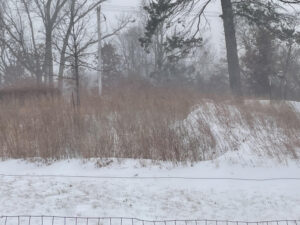
-
Capturing snow.
-
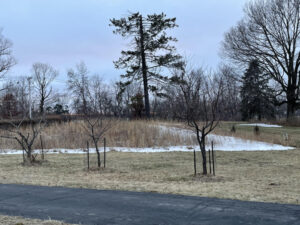
-
Three days later, a rapid melt left the ground bare, except where prairie plants held snow.
by Winding Pathways | Jan 9, 2019 | Birds, Garden/Yard, Mammals, Nature
When the next soft snow falls, go tracking outside! A late December 2019 skiff of snow delighted us. There was not enough of the white stuff to shovel but the thin white blanket that covered our yard revealed who visited the night before.
The dimples of deer tracks were clearly visible as we went out to get the newspaper, but one set of tracks was unusual and especially interesting. Four footprints, in a rough line, kept repeating with about three feet of untrod snow between them. Just what animal created them?
-
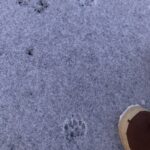
-
A skiff of snow is best for tracking.
-
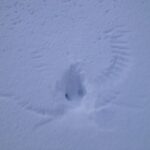
-
Gottcha!
-
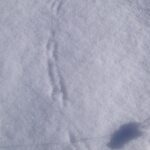
-
A small bird left tracks in the snow.
After a bit of sleuthing, we decided it was a coyote out seeking a mouse or rabbit dinner. Coyotes aren’t rare around our home but they aren’t in the yard often. We wish we could have watched it lope across the yard.
A skiff of snow makes for a delightful walk in the woods, grasslands, or wetlands. Often animals are easy to spot as their dark coats contrast with the white snow and tracking is superb. It’s usually not hard to figure out what animal made the tracks, and following them gives some idea of what the animal was doing and where it was going.
Many Websites and books help with track identification but we like www.naturetracking.com because it shows tracks of animals most likely to be in a backyard.
Happy tracking.
-
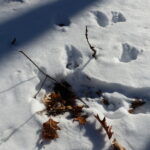
-
Squirrels at work.
-
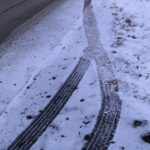
-
Even humans leave tracks all over.
-
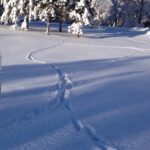
-
Deer paths are most obvious in deeper snow.
by Winding Pathways | Jan 18, 2016 | Geology/Weather, Nature, Preparedness
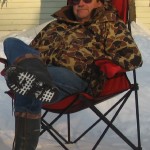
Dress in Layers, wear sturdy, insulted boots, and soak up Vitamin D with a brief “sun bath” even on cold winter days.
The woman giving our local television station’s weather report issued a dire warning. “It’s going to be below zero tomorrow with strong wind. It will feel like 30 below zero out. Stay inside”, she advised!
A gorgeous sunrise launched the next morning. It was a cold six below zero out but with only slight wind. Birds and squirrels arrived at the feeder, snatched a few seeds and flew or scampered off to enjoy breakfast in a sunny spot sheltered from the breeze.
Rarely do we have weather so bad that everyone must stay indoors. Certainly some days are more pleasant than others but at Winding Pathways we go outside, even if briefly, whether it’s frigid or broiling out -mainly to tend our animals. We mimic wildlife.
When August’s heat and humidity envelop Iowa we follow the pattern of the cottontail that lives in our yard. He and we are out in the evening and early morning. In mid-day we shun the sun and enjoy our maple’s cool shade. On blustery winter days we layer up and explore our yard, even if for just a short time. Modern clothing is amazingly effective keeping us comfortable as long as we do like our chickadees and find a sunny place out of the wind. We don’t fool around with tornadoes. If one’s approaching we heed the weather caster’s advice and stay in the basement. But, as soon as it passes we’re out in the yard.
Take temperature extremes seriously. Unusually hot or cold weather can cause serious physical problems, even death, but a prudent person who takes precautions and uses common sense will enjoy fresh air even in extreme weather.
BE CAREFUL, DRESS APPROPRIATELY, AND AVOID BEING UNDULY “SCARED” BY THE WEATHER REPORT.
“Climb the mountains and get their good tidings. Nature’s peace will flow into you as sunshine flows into trees. The winds will blow their own freshness into you, and the storms their energy, while cares will drop off like autumn leaves,” John Muir.
by Winding Pathways | Jan 4, 2016 | Nature, Travel/Columns, Wonderment
-

-
Our winter wreath will soon sport hearts and last us through the season.
-
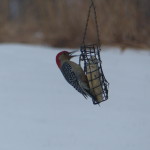
-
Wintering woodpeckers, including the pileated, gobble up suet.
-
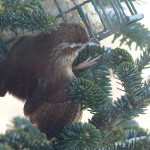
-
A lone Carolina Wren has hung around and appreciates the suet on our outdoor Christmas Tree.
-
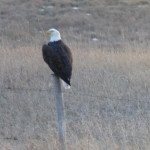
-
Eagles have come down from the north. As waterways freeze over they concentrate below roller dams.
-
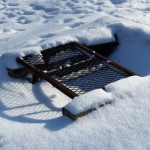
-
Lonely winter grill
-
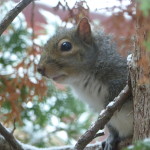
-
A cautious squirrel scoping out the action.
-
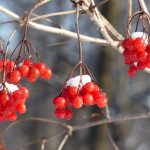
-
The birds have not yet flocked to the High Bush Cranberries but will later in the winter.
















